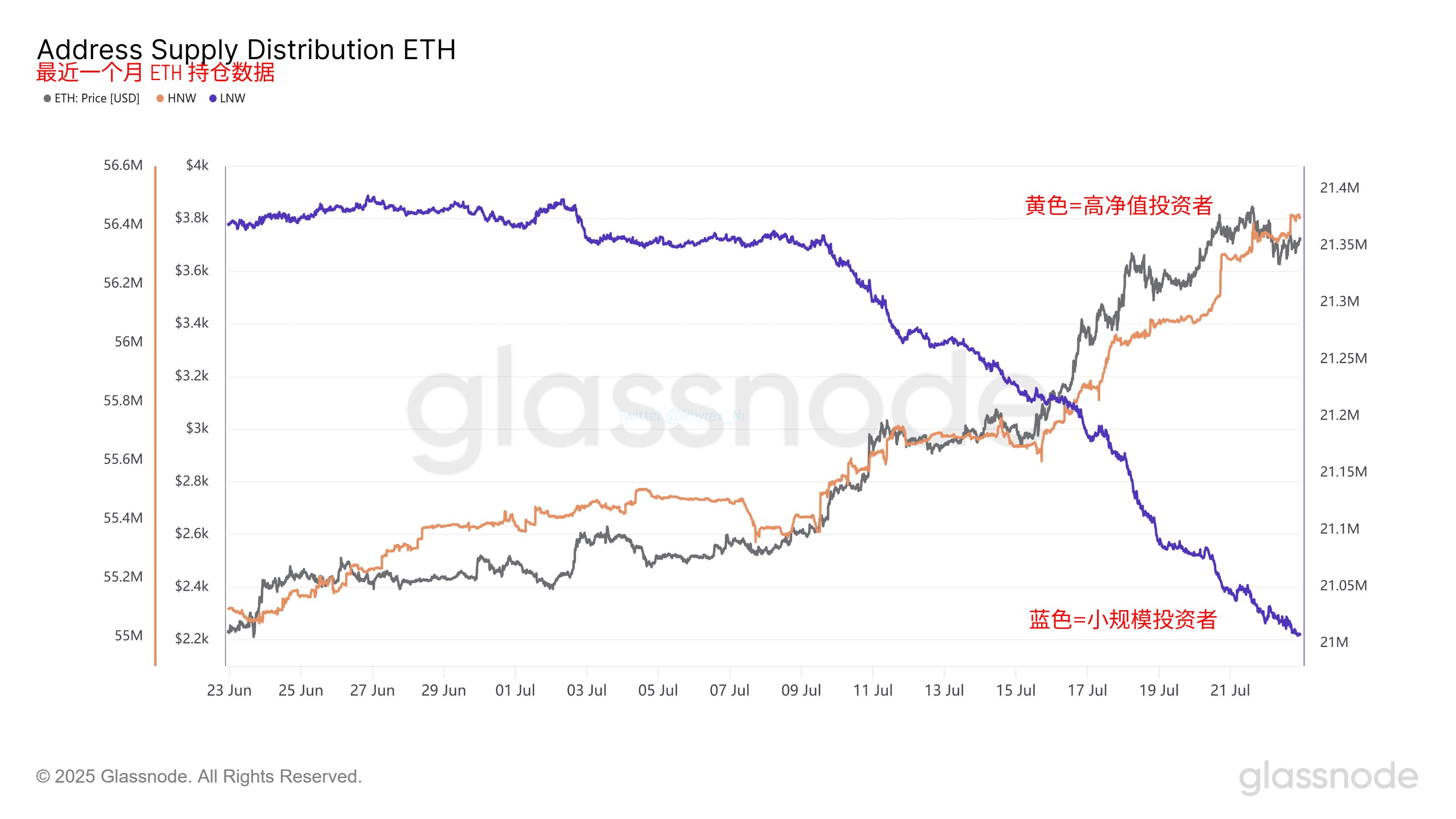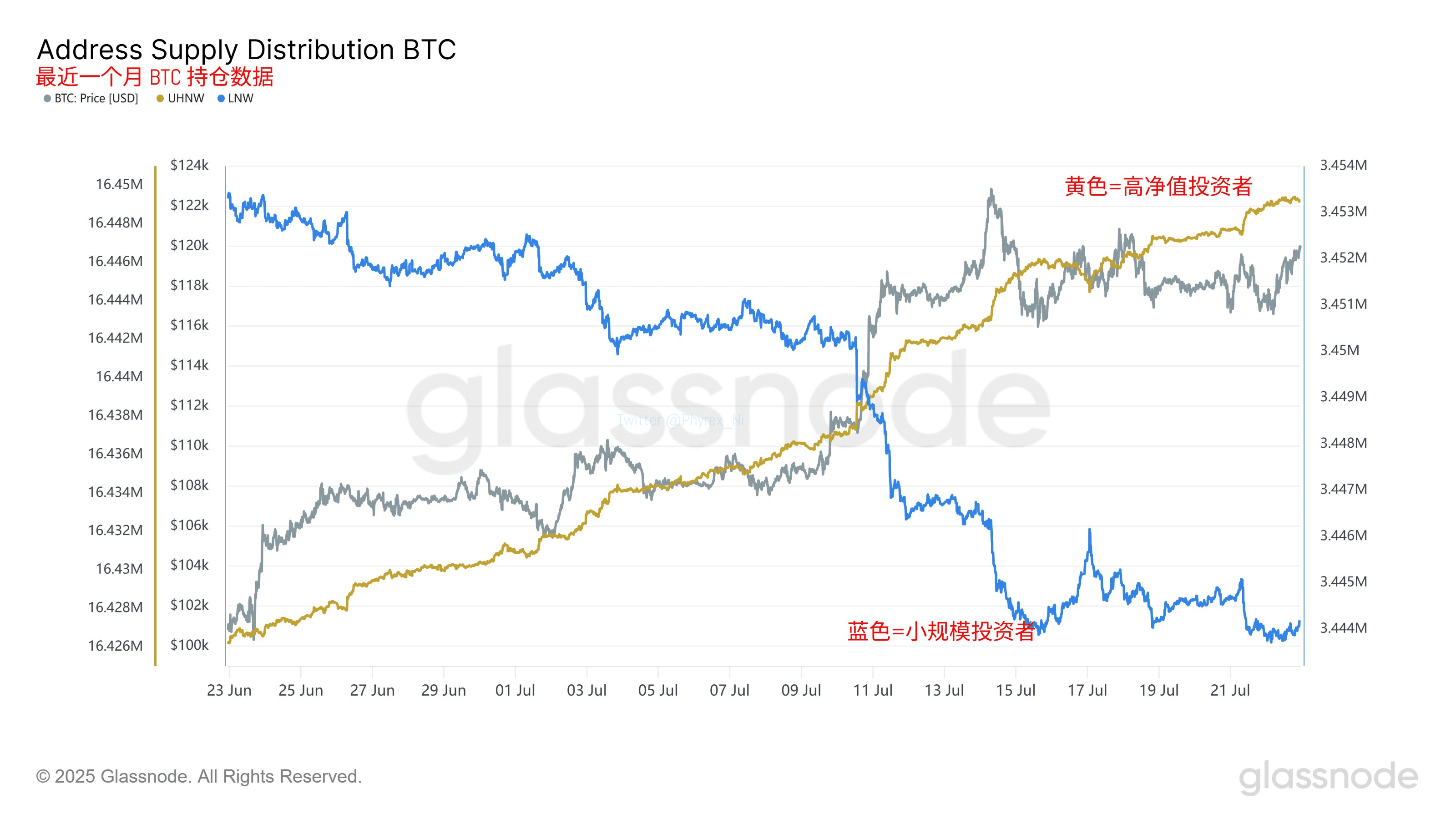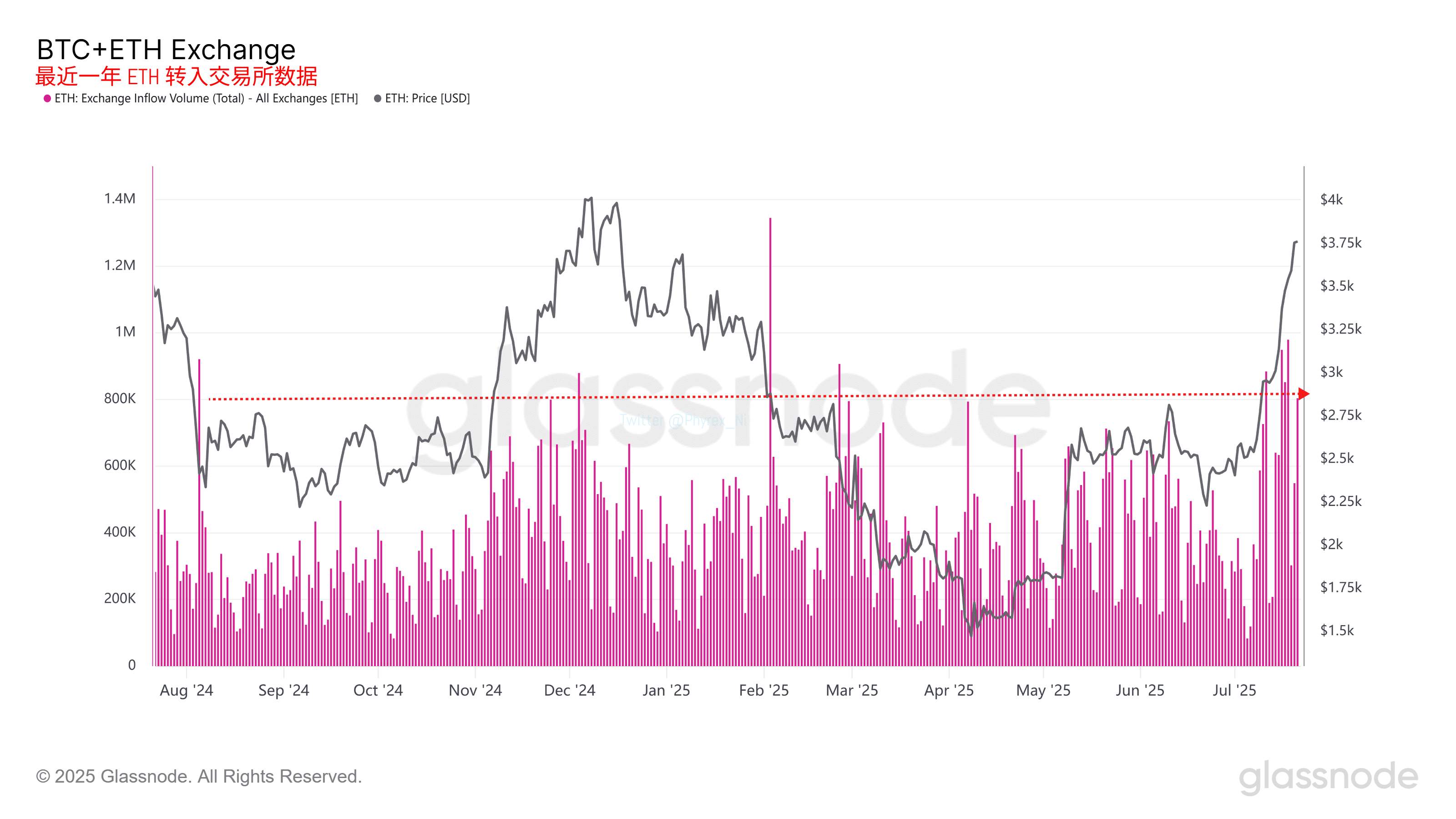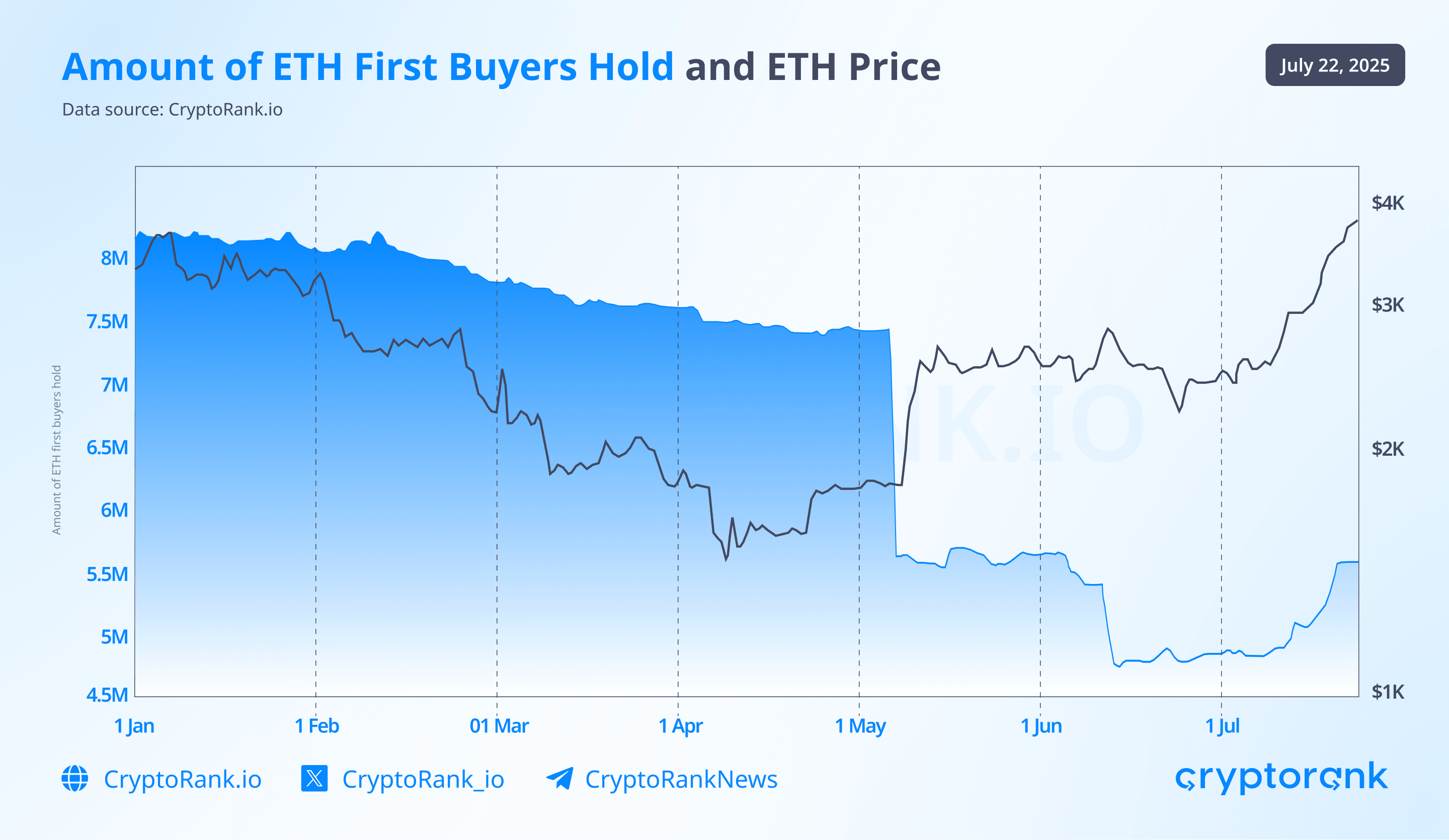Analysis of the Reasons for the Rise of ETH and BTC

In this week's cryptocurrency market, the prices of $ETH and $BTC have risen sharply, attracting the attention of many investors. Bitcoin has strongly broken through $120,000, setting a new historic high; Ethereum is nearing $4000, reaching a high point in nearly six months. What secrets lie behind this surge? Is it driven by market sentiment, or is there more solid fundamental support? Let's analyze it in depth.
From the perspective of ETF capital inflow, the rise of ETH has solid funding support. Taking BlackRock's (ETHA) as an example, its trading volume has significantly increased since ETH prices rose from $1700, even exceeding levels seen in 2024. When the price exceeds $2500, it has led to a substantial increase in trading volumes of several other funds, far exceeding the trading volume when ETH prices rose to $4000 in 2024. For BTC, the products from BlackRock, Fidelity, and Grayscale, even the product with the highest trading volume (IBIT) has only maintained around the average, showing no significant increase and even a slight decrease, while Fidelity and Grayscale have seen a noticeable decrease in trading volume. This indicates that compared to BTC, the increase in ETF purchasing power is an important factor in the rise of ETH.
Looking at on-chain fund flows and exchange inflow/outflow data, after ETH prices exceeded $2400, the ETH flowing into exchanges in preparation for selling has continued to rise, especially after prices surpassed $2500 and $3000, where the data of ETH entering exchanges has reached levels comparable to those during the end of 2024 when ETH surged towards $4000. However, the data of ETH being withdrawn from exchanges has shown a noticeable increase, currently far surpassing levels seen at the end of 2024. Based on the net flow of ETH in exchanges over the past year, it has predominantly been outflows throughout the year, with not many inflows leading to sell-offs. The stock of ETH in exchanges has significantly reduced between $1700 and $2500, with lower changes after exceeding $2500, until surpassing $3000, where purchasing power has notably increased. The increase in purchasing power under conditions of increased selling has reduced the stock in exchanges. Before this, the price increase was more due to a decrease in sell-off volume rather than a significant change in purchasing power. From the trading volume of ETH on Coinbase and Binance, although there have been signs of increase in the last two weeks, there has not been a substantial rise, indicating that while the purchasing power in exchanges has increased, the increase is relatively limited, and besides the FOMO sentiment of users, a larger possibility remains a decrease in sell-off volume.
After BTC's price broke through $115,000, the BTC flowing into exchanges for sell-off also showed a surge, but compared to ETH, BTC's sell-off is not very intense, remaining at a distance from the levels seen during the surge to $100,000 in December 2024. This indicates that compared to BTC, the sell-off demand from ETH investors is stronger. However, the main logic behind BTC's rise is not a significant increase in purchasing power but rather a very low sell-off volume.

Discussion on Conditions for the Emergence of the Altcoin Season
In the cryptocurrency market, the altcoin season is a phenomenon that attracts significant attention. The altcoin season usually refers to a period where altcoin prices rise sharply, outperforming mainstream cryptocurrencies like Bitcoin. During this period, mid-cap, low-cap, and micro-cap cryptocurrencies often experience varying degrees of increase, creating a prosperous market scene that greatly stimulates investor enthusiasm.
So, what conditions are needed for the emergence of the altcoin season?
Capital overflow is one of the key factors. When the funds in the market purchase mainstream assets like BTC and have remaining capital, this overflowed capital may flow into the altcoin market, providing momentum for altcoins to rise. For instance, by observing the difference between the total scale of stablecoins flowing into exchanges over 30 days and the dollar value of BTC being withdrawn from exchanges, one can assess the likelihood of capital overflow. When the total inflow of stablecoins exceeds the dollar value of BTC being withdrawn, it means that more funds may flow into altcoins.
The capital inflow situation of mainstream assets is also crucial. Historically, BTC often leads the overall sentiment of the crypto market, followed by market confidence shifting to other large-cap mainstream coins, and finally towards altcoins. When the total supply of mainstream assets like BTC and ETH, along with stablecoins, shows net capital inflow over a 30-day period, it is generally seen as a sign that market sentiment is beginning to heat up and overall risk appetite is rising, which is one of the macro conditions necessary to start the altcoin season.
The positive momentum of the discrete market capitalization of altcoins is also an important basis for judging the initiation of the altcoin season. When the total valuation of the 7D SMA (simple moving average) within the range of altcoins exceeds its 30D SMA total valuation, it indicates that the valuation of altcoins is amplifying in the short term and liquidity flowing into altcoins is rapidly increasing, which is also an important signal for the start of the altcoin season.
From the current market situation, although the prices of ETH and BTC are rising, there is still uncertainty about whether the altcoin season will occur. Currently, some conditions for capital inflow into mainstream assets are met, but the conditions for capital overflow and the positive momentum of discrete altcoin market capitalization are not fully satisfied. In other words, while the basis for starting the altcoin season is present, liquidity is still concentrated in mainstream assets, and there isn't much overflow of capital into the altcoin market.

The Future Direction of Crypto Under Multiple Influences
The correlation between ETH and Russell 2000 provides us with a unique perspective for analyzing the crypto market. From the current situation, ETH and Russell 2000 maintain a very tight correlation, which indicates that some investors have begun to place bets on sector rotation. Not only might ETH lead to the altcoin season in the cryptocurrency market, but Russell 2000 may also reflect the phenomenon of an altcoin season in the US stock market. This phenomenon suggests that market funds are seeking new investment opportunities and growth points, with the trend of sector rotation starting to emerge.
However, it is still too early to conclude whether there will be an altcoin season. From the perspective of ETH's selling pressure, when prices exceed $2400, the ETH flowing into exchanges in preparation for selling has continued to rise, especially after surpassing $2500 and $3000, where the data of ETH entering exchanges is already comparable to the sell-off volume when ETH surged to $4000 at the end of 2024. This shows that at the current price levels, investors have a strong selling willingness, placing certain pressure on price increases. If this selling pressure continues to increase, it may lead to a price correction.
However, from the perspective of capital flow, the data of ETH being withdrawn from exchanges has also shown a significant increase. Currently, the number of ETH being withdrawn from exchanges is much higher than at the end of 2024. This indicates that some investors are optimistic about the future trend of ETH and choose to withdraw it from exchanges for long-term holding. Moreover, looking at the net flow of ETH in exchanges over the past year, it has been predominantly outflows, reflecting a certain accumulation phenomenon in the market. Additionally, the purchasing power of spot ETFs has also become an important factor in the rise of ETH prices, with institutions like BlackRock showing a significant increase in ETF trading volume, especially BlackRock's $ETHA, which has seen a noticeable increase in trading volume since ETH prices rose above $1700.
In summary, the future trend of the crypto market is full of uncertainties. On the one hand, if ETH can continue to maintain a capital inflow trend and effectively digest selling pressure, then as market sentiment further improves and sector rotation effects strengthen, the crypto market may continue to reach new highs, potentially welcoming the altcoin season. In this case, the rise of ETH could lead to more capital flowing into the cryptocurrency market, especially towards some promising altcoin projects, thereby promoting overall market prosperity.
On the other hand, if selling pressure continues to increase and capital inflow cannot support price increases, the crypto market may experience a correction. Once a correction occurs, investor confidence may be affected, leading to capital outflows from the market and further price declines. Furthermore, if the rise of ETH does not drive off-exchange liquidity to shift towards altcoins as it has in the past, then the so-called altcoin season may simply be a localized rotation within the sector, failing to create a comprehensive market prosperity.
Therefore, investors need to closely monitor various signals in the market, such as capital flow, selling pressure, ETF trading volume, as well as macroeconomic conditions and policy changes, to make cautious investment decisions. In a market with high uncertainty, maintaining rationality and calmness, and not blindly chasing prices, is key to stable investing in the crypto market.

Summary and Outlook
In the changing landscape of the cryptocurrency market, we have witnessed the strong rise of ETH and BTC, and discussed the conditions for the emergence of the altcoin season as well as the future direction of the crypto market. The rise of ETH is supported by solid ETF capital inflows, while on-chain fund flows and exchange data also reflect the tug-of-war between bullish and bearish forces in the market. The emergence of the altcoin season requires the fulfillment of multiple conditions including capital overflow, capital inflow into mainstream assets, and the positive momentum of discrete altcoin market capitalization. Currently, while there is a foundation for starting the altcoin season, liquidity remains concentrated in mainstream assets.
For investors, the market is full of opportunities and challenges. In the future, we need to closely watch market dynamics, including changes in capital flow, ETF trading volume, selling pressure, etc. At the same time, adjustments in the macroeconomic environment and policies will also have a profound impact on the cryptocurrency market, and these factors need our continuous tracking and analysis. The development of the cryptocurrency market is changing rapidly, and we must maintain our enthusiasm for learning and research, continuously improving our understanding and judgment of the market, in order to seize opportunities and achieve stable investments in this uncertain market. Let's look forward to the exciting performance of the cryptocurrency market in the future.

